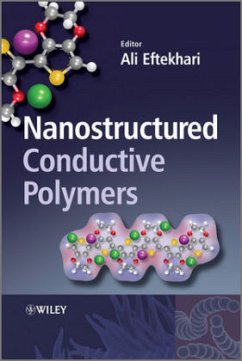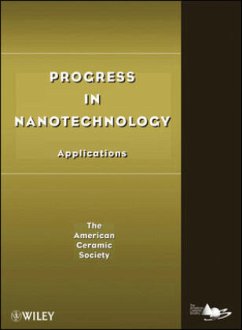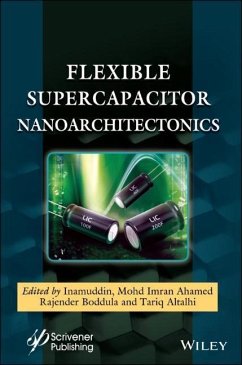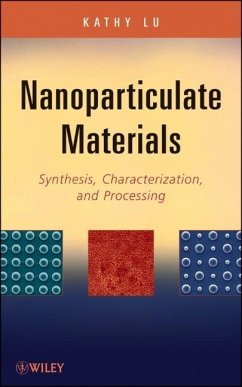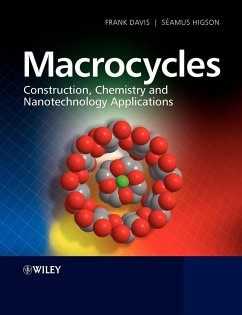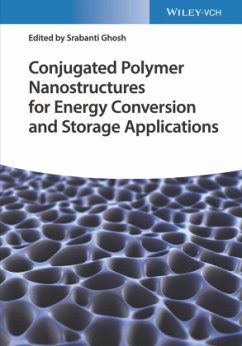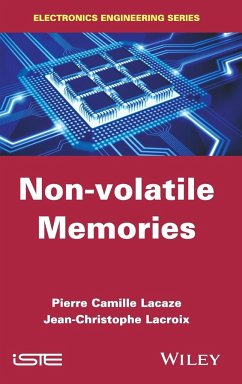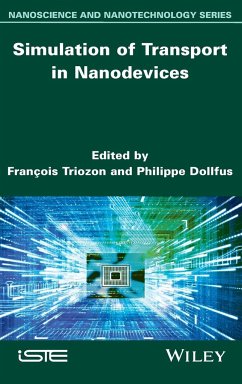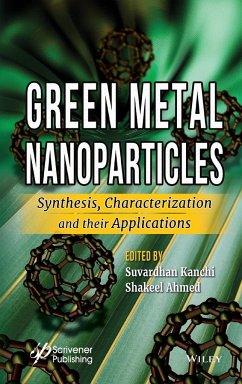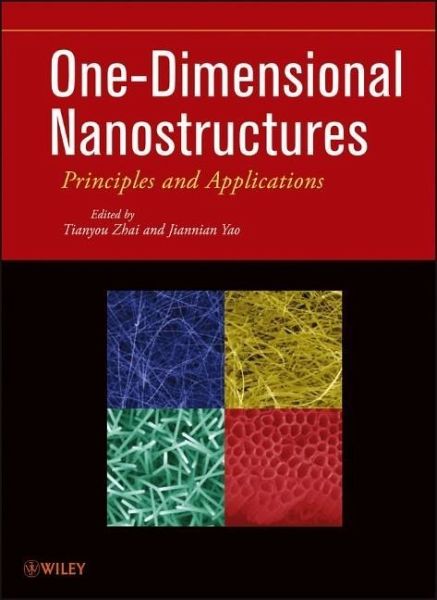
One-Dimensional Nanostructures
Principles and Applications
Versandkostenfrei!
Versandfertig in über 4 Wochen
167,99 €
inkl. MwSt.
Weitere Ausgaben:

PAYBACK Punkte
84 °P sammeln!
This book consolidates a wealth of current and complex information regarding one-dimensional nanostructures into one volume for practicing chemists, physicists, materials scientists, and engineers in industry and academia. One-dimensional nanostructures are both on the forefront of fundamental materials research and becoming part of our daily lives. More than fifteen worldwide experts provide in-depth chapters on their specific areas, including photodetectors, gas sensors, biosensors, chemical sensors, field-emitters, lasers, lithium-ion batteries, supercapacitors, light emitting diodes (LED), photovoltaics, nanogenerators, thermoelectrics, piezoelectrics, and field-effect transistors.
Reviews the latest research breakthroughs and applications
Since the discovery of carbon nanotubes in 1991, one-dimensional nanostructures have been at the forefront of nanotechnology research, promising to provide the building blocks for a new generation of nanoscale electronic and optoelectronic devices. With contributions from 68 leading international experts, this book reviews both the underlying principles as well as the latest discoveries and applications in the field, presenting the state of the technology. Readers will find expert coverage of all major classes of one-dimensional nanostructures, including carbon nanotubes, semiconductor nanowires, organic molecule nanostructures, polymer nanofibers, peptide nanostructures, and supramolecular nanostructures. Moreover, the book offers unique insights into the future of one-dimensional nanostructures, with expert forecasts of new research breakthroughs and applications.
One-Dimensional Nanostructures collects and analyzes a wealth of key research findings and applications, with detailed coverage of:
Synthesis
Properties
Energy applications
Photonics and optoelectronics applications
Sensing, plasmonics, electronics, and biosciences applications
Practical case studies demonstrate how the latest applications work. Tables throughout the book summarize key information, and diagrams enable readers to grasp complex concepts and designs. References at the end of each chapter serve as a gateway to the literature in the field.
With its clear explanations of the underlying principles of one-dimensional nanostructures, this book is ideal for students, researchers, and academics in chemistry, physics, materials science, and engineering. Moreover, One-Dimensional Nanostructures will help readers advance their own investigations in order to develop the next generation of applications.
Since the discovery of carbon nanotubes in 1991, one-dimensional nanostructures have been at the forefront of nanotechnology research, promising to provide the building blocks for a new generation of nanoscale electronic and optoelectronic devices. With contributions from 68 leading international experts, this book reviews both the underlying principles as well as the latest discoveries and applications in the field, presenting the state of the technology. Readers will find expert coverage of all major classes of one-dimensional nanostructures, including carbon nanotubes, semiconductor nanowires, organic molecule nanostructures, polymer nanofibers, peptide nanostructures, and supramolecular nanostructures. Moreover, the book offers unique insights into the future of one-dimensional nanostructures, with expert forecasts of new research breakthroughs and applications.
One-Dimensional Nanostructures collects and analyzes a wealth of key research findings and applications, with detailed coverage of:
Synthesis
Properties
Energy applications
Photonics and optoelectronics applications
Sensing, plasmonics, electronics, and biosciences applications
Practical case studies demonstrate how the latest applications work. Tables throughout the book summarize key information, and diagrams enable readers to grasp complex concepts and designs. References at the end of each chapter serve as a gateway to the literature in the field.
With its clear explanations of the underlying principles of one-dimensional nanostructures, this book is ideal for students, researchers, and academics in chemistry, physics, materials science, and engineering. Moreover, One-Dimensional Nanostructures will help readers advance their own investigations in order to develop the next generation of applications.




